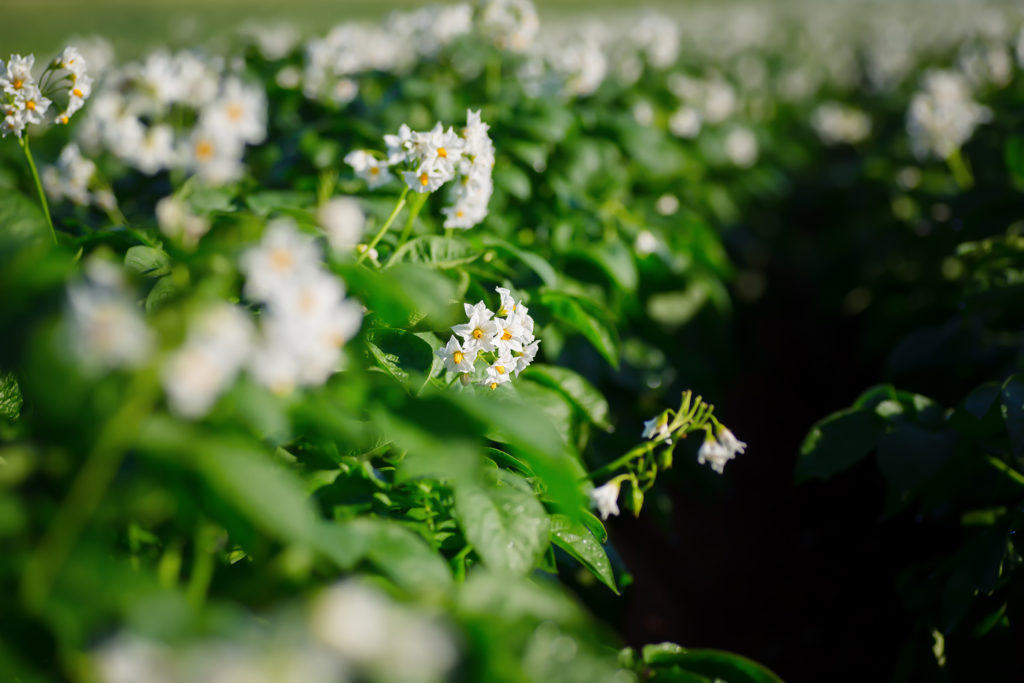Preventing and Managing Devastating Potato Late Blight Outbreaks
{Sponsored} Late blight can rapidly become severe; farmers can see it go from a few lesions to complete defoliation in just a few days. When vines are destroyed, photosynthesis is stopped and yield is dramatically impacted since tubers can be affected.
 In order to manage this disease before it causes serious damage to a crop, potato farmers can be proactive and scout for signs of the disease on their own. Farmers should start to scout as soon as the crop starts to emerge. Certain areas of a field tend to be more at risk than others. Farmers should look for lesions in low spots, compacted areas, rows close to tree lines, field edges along creeks or ponds, pivot center points, pivot wheel tracks and weedy areas of their fields.
In order to manage this disease before it causes serious damage to a crop, potato farmers can be proactive and scout for signs of the disease on their own. Farmers should start to scout as soon as the crop starts to emerge. Certain areas of a field tend to be more at risk than others. Farmers should look for lesions in low spots, compacted areas, rows close to tree lines, field edges along creeks or ponds, pivot center points, pivot wheel tracks and weedy areas of their fields.
In addition to scouting for the disease in their fields, Curtis Rainbolt, Technical Service Representative at BASF, recommends farmers use a proactive application of a fungicide, such as Forum® fungicide, to control this disease.
Forum fungicide should be tank-mixed with multisite inhibitors. The multisite inhibitors are slightly less effective, but since they have a lower potential for resistance, applying chemicals such as chlorothalonil or copper in combination with Forum fungicide will help with resistance management.
“When conditions are favorable for late blight development, multiple applications up to more than once a week might be necessary. As a result, resistance management is often difficult,” said Rainbolt. To mitigate this, farmers should rotate chemistries and avoid pairing chemistries from the same FRAC group together.
“Forum fungicide is ideal for prevention and control of late blight because it greatly reduces sporulation of the disease,” Rainbolt said. Forum fungicide “disrupts fungal cell wall formation by interfering with cellulose synthase,” he said. In layman terms, it devastates fungal cell walls and prevents them from repair.
Rainbolt recommends that farmers review the rate structure, but that they do not reach the maximum allowed application. “Five-and-a-half ounces in combination with a multisite inhibitor will work most effectively. Forum fungicide has good activity on late blight. However, we need to be aware of resistance management for late blight, so be sure to mix multiple FRAC codes,” he said.
Above all else, late blight is a community disease. Farmers can’t simply rely on their own good habits and correct chemistries to prevent the devastation that late blight can cause to a crop — cultural practices are also important. “Often late blight is worse in years when we have a lot of volunteer potatoes. If late blight survives the winter in volunteer potatoes or cull piles, the disease is often worse the following year,” Rainbolt said.
To prevent late blight from devastating crops, it is vital for farmers to work with their local university extension program, as extension personnel track late blight very closely. When farmers call the extension about late blight lesions, and once late blight is confirmed in fields, the university will issue an alert to the area.
By working with university extension programs and communicating with neighboring farms, farmers can help a region stay isolated from an outbreak of late blight. Pairing this communication with proper cultural practices and the right chemistries, such as Forum fungicide in a tank mix, will go a long way in preventing the devastation that late blight can cause to potato farms.
For more information, visit www.GrowSmartPotatoes.com or contact your local BASF representative.
Always read and follow label directions. Forum fungicide is a registered trademark of BASF. All rights reserved.
© 2018 BASF Corporation














